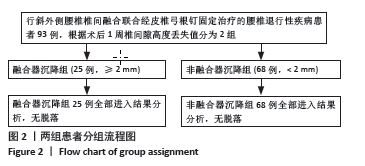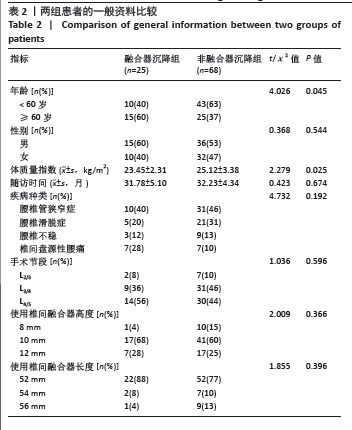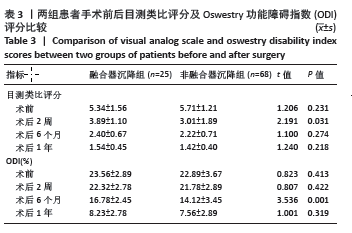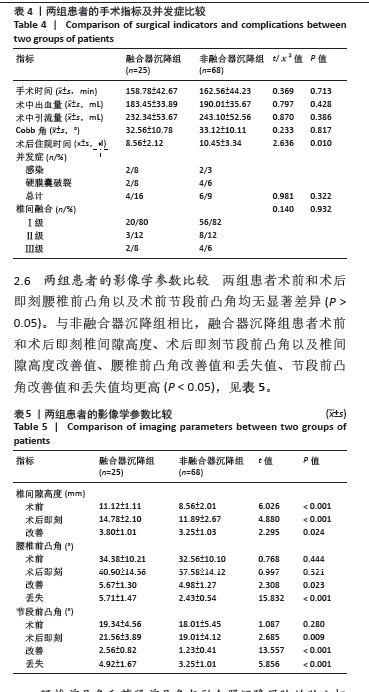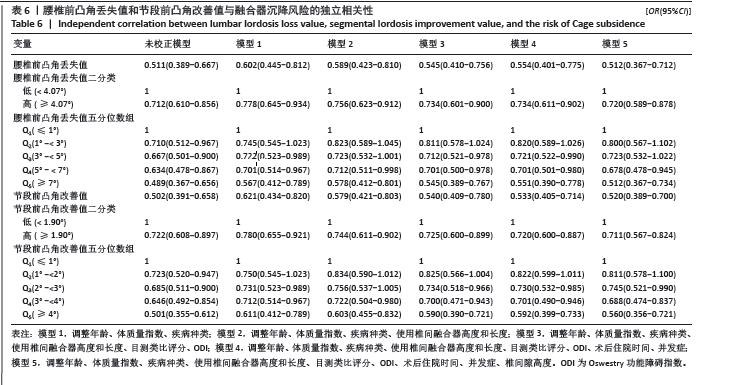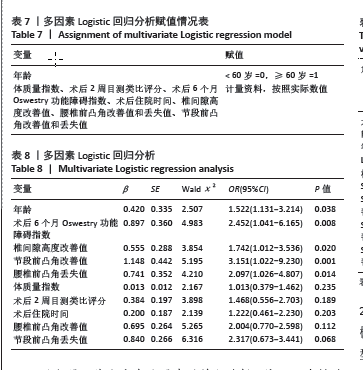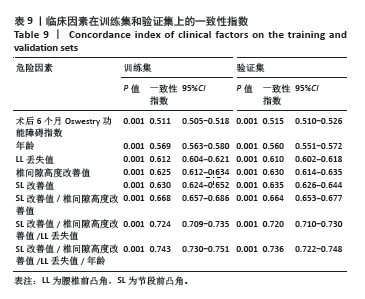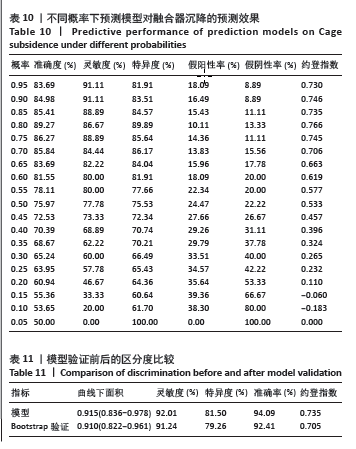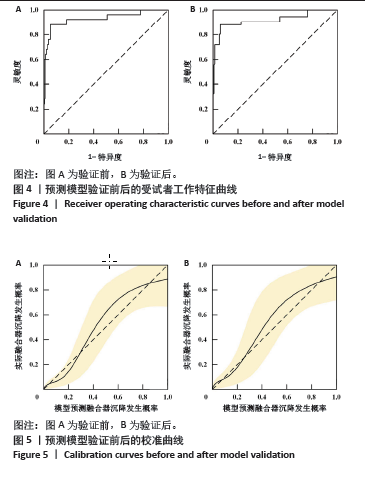[1] JESSE CM, MAYER L, HANI L, et al. Anterior lumbar interbody fusion in elderly patients: Peri- and postoperative complications and clinical outcome. J Neurol Surg A Cent Eur Neurosurg. 2023;84(6):548-557.
[2] WANG L, LI C, WANG Z, et al. Comparison of robot-assisted versus fluoroscopy-assisted minimally invasive transforaminal lumbar interbody fusion for degenerative lumbar spinal diseases: 2-year follow-up. J Robot Surg. 2023;17(2):473-485.
[3] LIN GX, NAN JN, CHEN KT, et al. Bibliometric analysis and visualization of research trends on oblique lumbar interbody fusion surgery. Int Orthop. 2022;46(7):1597-1608.
[4] RAN L, XIE T, ZHAO L, et al. Low Hounsfield units on computed tomography are associated with cage subsidence following oblique lumbar interbody fusion (OLIF). Spine J. 2022;22(6):957-964.
[5] ZHUANG QK, LI W, CHEN Y, et al. Application of oblique lateral interbody fusion in treatment of lumbar spinal tuberculosis in adults[J]. Orthop Surg. 2021;13(4):1299-1308.
[6] ZHANG X, WU H, CHEN Y, et al. Importance of the epiphyseal ring in OLIF stand-alone surgery: a biomechanical study on cadaveric spines. Eur SpineJ. 2021;30(1):79-87.
[7] 郎昭, 葛腾辉, 吴静晔, 等. 斜外侧腰椎椎间融合联合侧方钢板与联合后路椎弓根螺钉内固定治疗腰椎退行性疾病的半年随访[J].中国组织工程研究,2022,26(33):5364-5369.
[8] 王吉莹, 王燕燕, 周志杰, 等. 斜外侧椎间融合术治疗腰椎退行性疾病的早期并发症分析[J]. 中华骨科杂志,2017,37(16):1006-1013.
[9] WALKER CT, FARBER SH, COLE TS, et al. Complications for minimally invasive lateral interbody arthrodesis: a systematic review and meta-analysis comparing prepsoas and transpsoas approaches. J Neurosurg Spine. 2019;30(4):1-15.
[10] 吴海昊, 周春光, 汤涛, 等. 单纯斜外侧腰椎椎间融合术后融合器沉降与腰椎矢状面参数的关系[J]. 中国脊柱脊髓杂志,2022,32(2): 128-134.
[11] 张慰. 经椎间孔椎体间融合术治疗单节段腰椎退行性疾病术后融合器下沉及危险因素分析[J]. 安徽医药,2020,24(5):972-976.
[12] 严广斌. 视觉模拟评分法[J]. 中华关节外科杂志(电子版),2014, 8(2):34.
[13] FUJIWARA A, KOBAYASHI N, SAIKI K, et al. Association of the Japanese Orthopaedic Association score with the Oswestry Disability Index, Roland-Morris Disability Questionnaire, and short-form 36. Spine (Phila Pa 1976). 2003;28(14):1601-1607.
[14] 中华医学会骨科学分会脊柱外科学组. 椎斜外侧椎间融合术的临床应用指南[J]. 中华骨科杂志,2020,40(8):459-468.
[15] LI HD, ZHONG L, MIN JK, et al. Oblique lateral interbody fusion combined with lateral plate fixation for the treatment of degenerative diseases of the lumbar spine: a retrospective study. Medicine (Baltimore). 2022;101(7):e28784.
[16] LIU J, FENG H. Oblique lateral interbody fusion (OLIF) with supplemental anterolateral screw and rod instrumentation: A preliminary clinical study. World Neurosurg. 2020;134:e944-e950.
[17] 黄丽花, 陈建梅, 姚晓东, 等. 斜外侧椎间融合术治疗退变性腰椎疾病的临床疗效[J]. 实用骨科杂志,2022,28(6):537-540,552.
[18] SHASTI M, KOENIG SJ, NASH AB, et al. Biomechanical evaluation of lumbar lateral interbody fusion for the treatment of adjacent segment disease. Spine J. 2019;19(3):545-551.
[19] 郝家齐, 王永峰, 原杰, 等. 斜外侧椎间融合术融合器沉降对腰椎生物力学影响的有限元分析[J]. 中国脊柱脊髓杂志,2021,31(3): 254-261.
[20] ZHANG C, WANG K, JIAN F, et al. Efficacy of oblique lateral interbody fusion in treatment of degenerative lumbar disease. World Neurosurg. 2019;124:e17-e24.
[21] 江雨剑, 刘晨, 肖良, 等. 斜外侧腰椎间融合联合后路经皮椎弓根钉内固定治疗腰椎滑脱症的疗效分析[J]. 中国骨与关节损伤杂志, 2023,38(3):247-251.
[22] TEMPEL ZJ, GANDHOKE GS, OKONKWO DO, et al. Impaired bone mineral density as a predictor of graft subsidence following minimally invasive transpsoas lateral lumbar interbody fusion. Eur Spine J. 2015; 24(Suppl 3):414-419.
[23] 王先辉, 王华, 陈舰, 等. I,II度单节段退行性腰椎滑脱应用OLIF与MIS-TLIF手术的疗效研究[J]. 颈腰痛杂志,2022,43(3):341-347.
[24] LI J, ZHANG D, SHEN Y, et al. Lumbar degenerative disease after oblique lateral interbody fusion: sagittal spinopelvic alignment and its impact on low back pain. J Orthop Surg Res. 2020;15(1):326.
[25] 刘磊, 刘国臻, 张绍东, 等. 骨质疏松对后路单节段腰椎融合术后融合器沉降程度的影响[J]. 中国脊柱脊髓杂志,2020,30(2): 111-117.
[26] STRUBE P, HOFF EK, SCHURINGS M, et al. Erratum to: Parameters influencing the outcome after total disc replacement at the lumbosacral junction. Part 2: distraction and posterior translation lead to clinical failure after a mean follow-up of 5 years. Eur Spine J. 2013;22(10):2279-2287.
[27] 张明彦, 刘向阳, 常磊, 等. 腰椎融合过程中终板损伤与术后融合器脱出的关系[J]. 中国组织工程研究,2021,25(18):2856-2862.
[28] BERVEN S, WADHWA R. Sagittal alignment of the lumbar spine. Neurosurg Clin N Am. 2018;29(3):331-339.
[29] 马承榕, 陈焕雄, 李国军, 等. 实时三维导航辅助微创经椎间孔腰椎椎间融合术后腰骶部矢状位平衡参数变化分析[J]. 中国骨伤, 2021,34(4):315-320.
[30] OH KW, LEE JH, LEE JH, et al. The correlation between cage subsidence, bone mineral density, and clinical results in posterior lumbar interbody fusion. Clin Spine Surg. 2017;30(6):E683-E689.
[31] 吴海琴, 邱名耀, 鄞晓斌, 等. 基于Logistic回归模型分析急性类鼻疽脓毒症患者预后不良的危险因素[J]. 临床和实验医学杂志, 2023,22(5):469-473.
|
